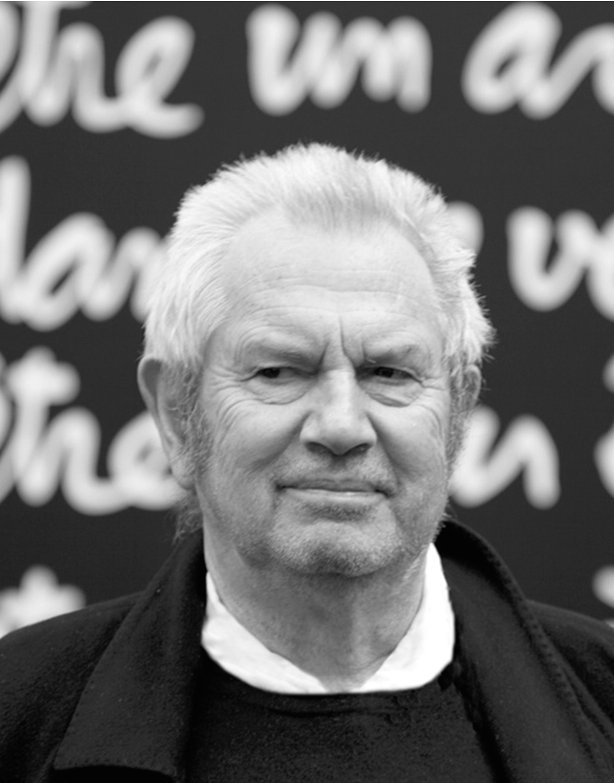The world of contemporary art is in mourning. Benjamin Vautier, better known as Ben, died on Wednesday at his home in Saint-Pancrace, near Nice, at the age of 88. His death came just hours after that of his wife, Annie Vautier. According to an official statement from his family, the artist took his own life because he could not imagine life without her.
An instantly recognisable style
Ben was best known for his childlike calligraphy in white letters on a black background. These clear, unique inscriptions had become his signature, an instantly recognisable logo. For over fifty years, words have been at the heart of his work, combining concept and popularity, history and current events.
A rich and varied artistic career
Born in Switzerland on 18 July 1935, Ben began his artistic career in a bookshop and stationery shop in Nice, which his mother had bought to encourage him to find a career. He quickly transformed the shop into an exhibition and meeting place for the young avant-garde artists of Nice. Le Laboratoire 32, which became the Ben Doute de Tout Gallery, became an emblematic space for contemporary art.
In 1975, his work entered the collections of the Musée National d’Art Moderne in Paris, confirming his influence and talent.
Art and life, an inseparable unity
For Ben, art could never be separated from life. His house in Saint-Pancrace, known as ‘Chez Malabar et Cunégonde’, was a place where he lived, created and discussed his art. Filled with works, archives and salvaged objects, it is now the Fondation du doute, a living tribute to Ben’s philosophy of limitless artistic proliferation, where the subsistence economy of salvage and barter replaces the capitalist art market.
A key figure in the Fluxus movement
In the late 1950s, Ben met Arman, Yves Klein and other Nouveau Réalisme artists. These meetings had a profound influence on his work. In 1962 he attended the Festival of Misfits in London, where he met George Maciunas, the founder of the Fluxus movement. The following year, Ben organised a series of Fluxus events in Nice, marking the arrival of the movement in France.
His travels, notably to New York in 1964, strengthened his connection with Fluxus, and he never ceased to carry its message while cultivating his own singularity.
Conceptual and activist art
Ben used simple gestures to create powerful works of art. His calligraphic statements, often provocative and humorous, engage the public in dialogue, provoking reaction and debate. He plays with contradictions, asserting the inseparability of art and life.
His works, whether signed objects or performances, aim to change our perception of the world, not by adding new objects, but by reinterpreting those that already exist.
The legacy of an unforgettable artist
Ben’s death leaves a huge void in the art world. His work, characterised by a relentless search for truth and a constant questioning of the art world, will continue to inspire and provoke. His unique approach, combining simplicity and depth, reached a wide audience and made art accessible to all.
Benjamin Vautier, aka Ben, was more than an artist: he was a philosopher of art, a gentle provocateur and an essential figure in contemporary art. His legacy will live on, reminding us of the importance of innovation, diversity and the integration of art into all aspects of life.

